Inside: Got kitchen sponges and seeds? Then you have to try growing a grass house with your kids. With this activity, kids practice waiting, observing, and learning about seeds while having lots of fun.
Of all the possible seed experiments you might try with your kids, I’d say a grass house provides the most excitement. Behind this delightful activity is a simple concept: you build a house out of porous material like a kitchen sponge and sprinkle it with seeds. Then you place it in a covered container along with a cup of hot water to create a greenhouse effect and voila, in no time, you get a grass-covered house that looks absolutely magical.
It’s quick and foolproof, and your kids will love watching the grass grow before their eyes.
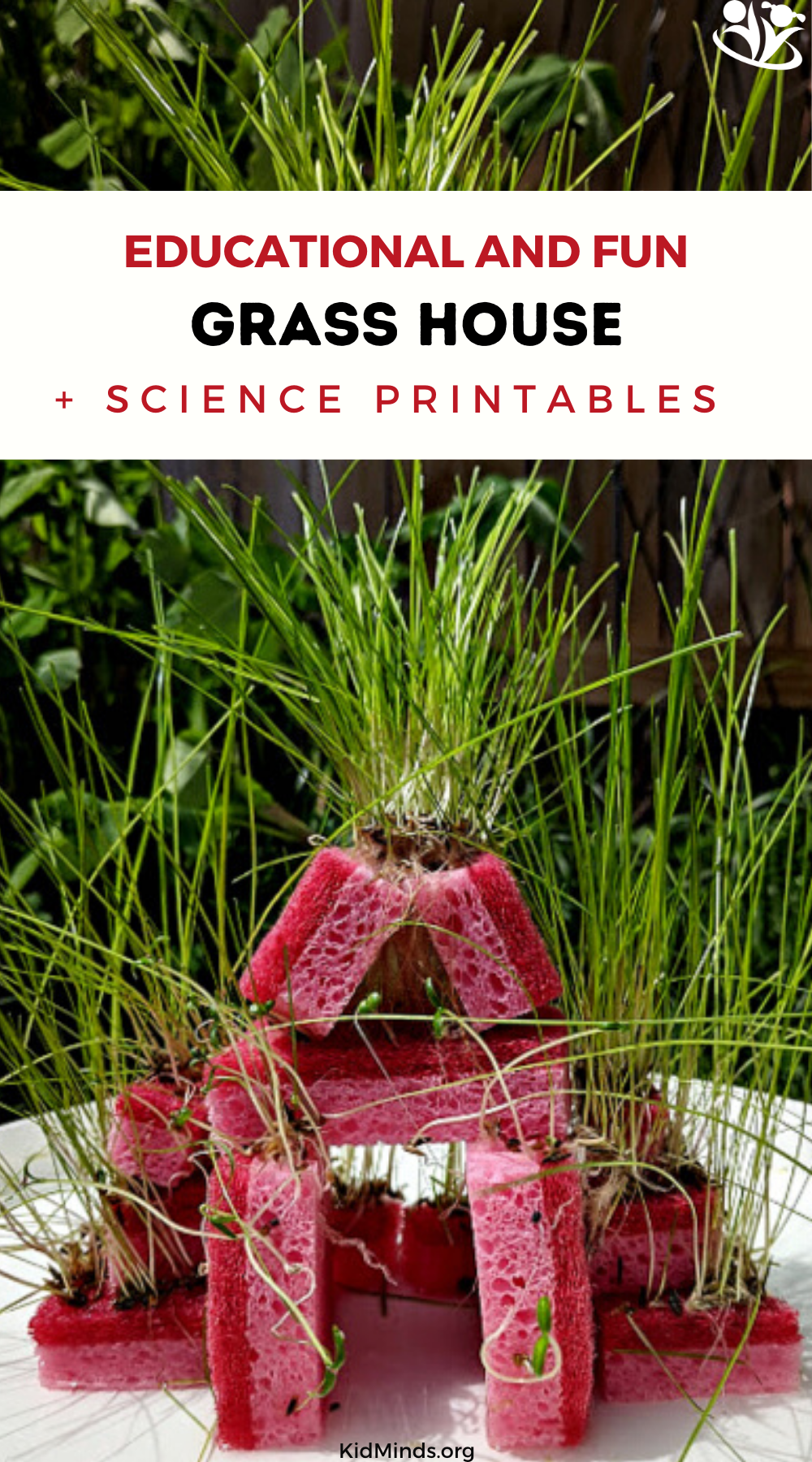
Trim the grass as it grows (my preschooler is especially fond of giving “trims”) and add some small world animals and cars for a novel playground.
Grow a Grass House

What you need
Cleaning sponges (about 3 per kid)
Scissors
Glue gun
Grass seed (we used fast-growing kind)
Plate or tray with the lid
Bowl
What to do

- Depending on the age of your kids, the sponge house can be elaborate or simple. My oldest kids grabbed pencils and notebooks and started by sketching the house they were planning to build. For the youngest kids, I cut sponges into pieces (mostly halves and quarters) and let them assemble the pieces any way they wanted.

- I used a glue gun to connect the pieces together. You can also try toothpicks instead, but we found it hard to connect the pieces exactly the way we wanted with them.

- Place the assembled house inside a deep tray, plate, or plastic container that comes with a lid, and water it generously to get it ready for seeds.
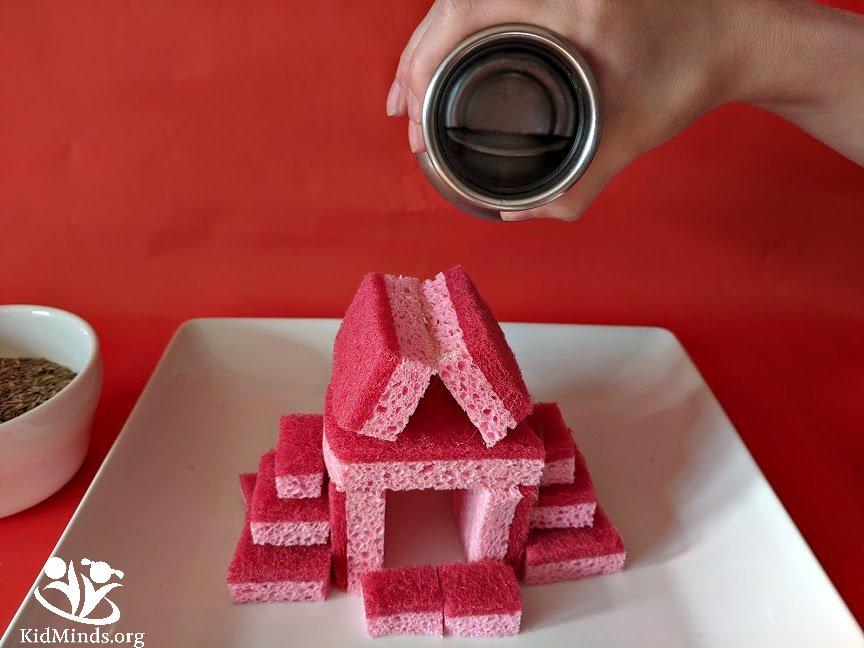
- The fun part: sprinkle seeds all over the sponge house. We used tweezers to place some of the seeds exactly where we wanted them.

- Fill a cup or bowl with hot water and carefully place it inside the tray. Cover the sponge house with a lid to create a greenhouse effect. If it’s clear, your kids can check on seeds without interfering with the temperature inside.

- Water the seeds every day, but take care not to wash them all down to the bottom. A spray bottle might be a good choice for you, but it didn’t work for my kids.
- Add a fresh bowl of hot water. How often? Depends on the season. If your container is standing in a sunny, warm place, then once a day is enough. But if you do this activity during winter, as we did once, I find it’s best to add hot water at least three times a day to keep the steamy effect strong. It makes the grass grow super fast.
- Enjoy watching the grass grow!
Day 3:
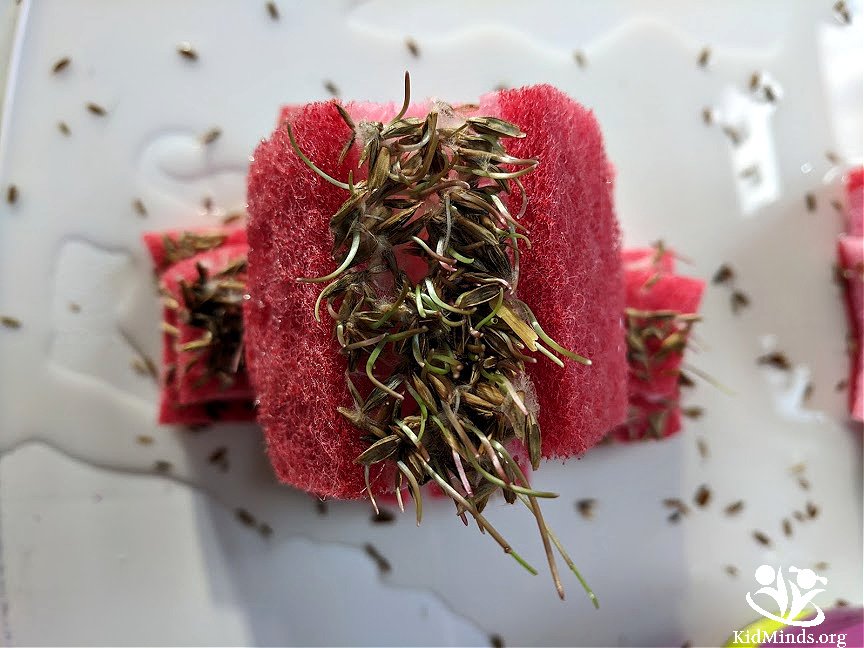
Day 6:
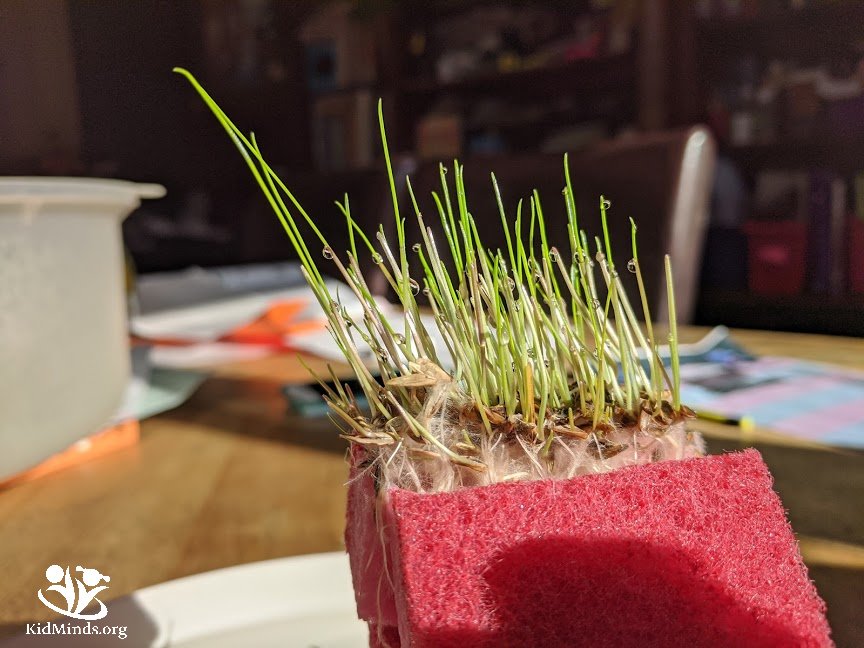
2 weeks:
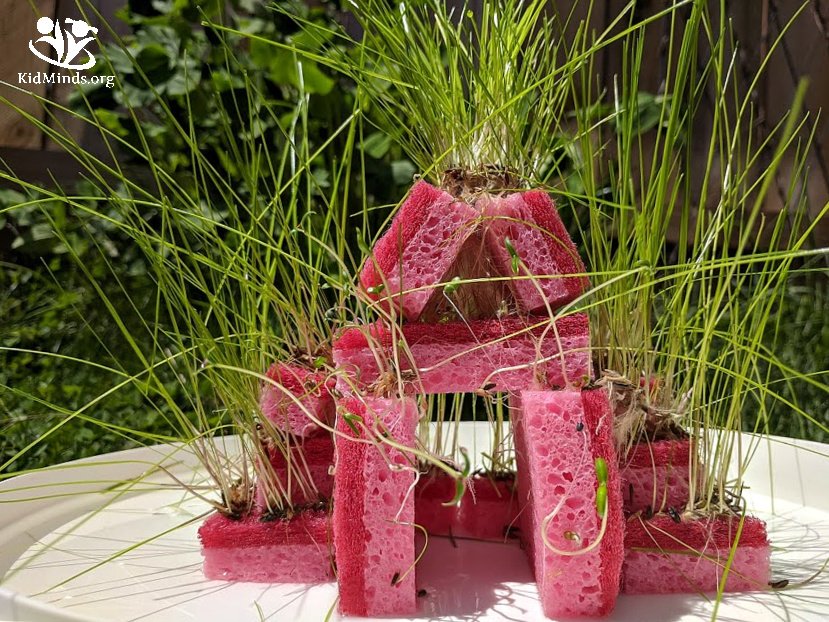
Extension activities:
- Trim the grass as it grows.

- Try to keep the grass from dying a whole season. Hint: just water it as a normal plant and keep it without the lid once the grass is established. We took our grass houses outside.

- Add small toys to the tray and turn the green house into an exciting play setting.
The Science of Grass
Grass is extremely important to your life, whether you know it or not. Rice, corn, oats, wheat, rye, and other grass plants are a major food source for people all over the world. Grass feeds livestock, and it’s also used to curb erosion and to make paper, fuel, clothing, sugar, and plastic.
Did you know that grasses make up about 26% of the plant life on earth? Varieties of grass grow on all continents, even in polar regions, and there are about 10,000 species of grasses (1,440 in the United States alone)! Ask your kids if they can name any grass variety that is not your lawn grass. Hint: remind them of cereals and grains in your pantry, and surprise them by revealing that bamboo is also grass.
One interesting science fact about grass that I love to talk about is the smell. You know that smell of freshly cut grass that is a quintessential part of summer in many parts of the world? Well, “according to researchers at the Institute for Applied Physics at the University of Bonn in Germany, plants release gases that are the equivalent of crying out in pain.” Ouch!
What you smell is a mix of carbon-based compounds called green-leaf volatiles that is released when plants are damaged. If you break a grass stalk or two, you won’t notice any smell, but cutting a whole lawn of grass releases a massive amount of volatile compounds that you can detect. Scientists speculate that those compounds act as antibiotics preventing an infection and also stimulate formation of new cells at the site of the wound.
The Science of Grass Printables (FREE!)

What is included?
Five pages: basic anatomy of the grass, fill-in-the-blanks chart, a page with all the relevant definitions, the science of grass crossword puzzle, and a word search.
Do you want the grass science printables?
Easy! Drop your e-mail here and I will send you a link to my library of resources + password.


Leave a Reply